
|
Astronomy Picture Of the Day (APOD)
 Descent To Jupiter
Descent To Jupiter
8.12.1995
Hours ago, at about 5:00 pm EST (2200 GMT) December 7, Galileo's descent probe slammed into Jupiter's atmosphere. Above is an artist's vision of the probe's planned descent from a dramatic perspective.
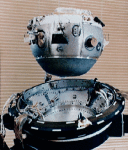 Galileo's Jupiter Probe
Galileo's Jupiter Probe
7.12.1995
Today, at about 5:00 pm EST, this 750 pound probe from NASA's robot spacecraft Galileo will plummet into Jupiter becoming the first probe to fly through the atmosphere of a gas giant planet.
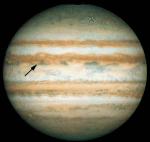 24 Hours from Jupiter
24 Hours from Jupiter
6.12.1995
NASA's robot spacecraft Galileo began its long voyage to Jupiter more than six years and 2.3 billion miles ago. About 24 hours from now it will reach its destination. On arrival (December...
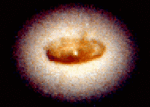 The Swirling Center of NGC 4261
The Swirling Center of NGC 4261
5.12.1995
What evil lurks in the hearts of galaxies? The above picture by the Hubble Space Telescope of the center of the nearby galaxy NGC 4261 tells us one dramatic tale. Here gas and dust are seen swirling near this elliptical galaxy's center into what is almost certainly a massive black hole.
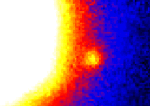 GL 229B: An Elusive Brown Dwarf?
GL 229B: An Elusive Brown Dwarf?
4.12.1995
What type of matter makes up most of the universe? This question is arguably the most perplexing astronomical mystery of our time. A leading candidate is a type of dim, low mass star called a "brown dwarf" star.
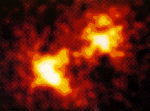 An X-ray Hot Supernova in M81
An X-ray Hot Supernova in M81
3.12.1995
In 1993, a star in the galaxy M81 exploded. Above is a picture of the hot material ejected by this supernova explosion. The picture was taken in X-rays with the Advanced Satellite for Cosmology and Astrophysics (ASCA).
 Lightning Below
Lightning Below
2.12.1995
In May of 1993, the Space Shuttle Columbia orbited the Earth carrying the Spacelab Deutsche 2 (SL-D
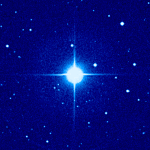 51 Pegasi: A New Planet Discovered
51 Pegasi: A New Planet Discovered
1.12.1995
Are we alone in the universe? Do other stars have planets too? Humanity took one step closer to answering these questions in October 1995 when it was announced that the star 51 Pegasi harbors at least one planet.
 NGC 2440 Nucleus: The Hottest Star?
NGC 2440 Nucleus: The Hottest Star?
30.11.1995
In the center of the above photograph lies a star with one of the hottest surface temperatures yet confirmed. This bright white dwarf star's surface has been measured at greater than 200,000 degrees Celsius - more than 30 times hotter than that of our own Sun.
 Releasing Compton
Releasing Compton
29.11.1995
Named for Nobel laureate physicist Arthur Holly Compton, the Compton Gamma Ray Observatory (CGRO) Satellite was launched in April of 1991 aboard the Space Shuttle Atlantis. CGRO's mission is to explore the Universe at gamma-ray energies.
|
January February March April May June July August September October November December |
|||||||||||||||||||||||||||||||||||||||||||||||||